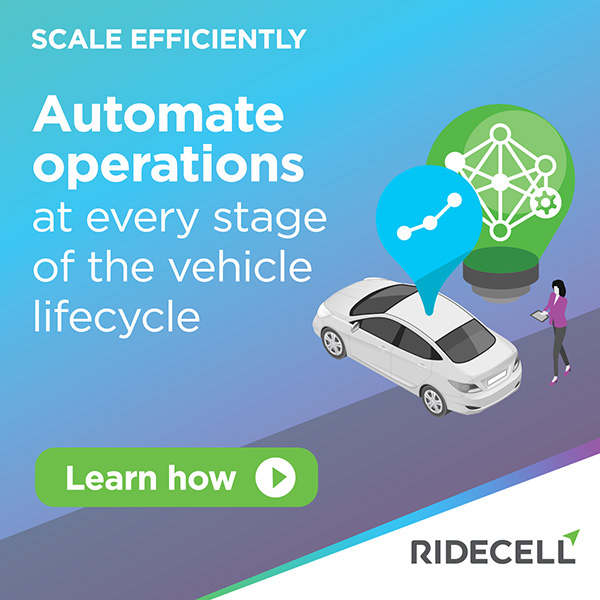
By Sumit Chauhan, Co-founder and Chief Operating Officer, CerebrumX
January 3, 2024
Integrating data into fleet management has long been a key strategy to address new challenges of the automotive industry. However, the data in question is not fully intelligent, and this is what sets this era apart from existing solutions. That is, the level of intelligence inherent in the data used.
Traditionally, fleet operators have relied heavily on data derived from hardware dongles, a practice that was entirely justified when the number of vehicles on the road was fewer, and data volumes remained manageable. Fast forward to today, with a colossal influx of vehicles and an unprecedented surge in data generation, the use of OBD devices no longer aligns with the current demands of fleet management.
Furthermore, modern vehicles by design can now collect data indigenously, rendering external hardware devices obsolete. This evolution paves the way for a new and more efficient approach to data collection – the utilization of embedded connected vehicle data and telematics.
The Need for a Device-Agnostic Environment
Historically, Telematics Service Providers (TSPs) have operated closed telematics systems, relying only on their own equipment and limiting data sharing. Embedded data enables TSPs to serve a variety of third-party devices alongside connected vehicles, promoting a device-agnostic experience. This allows you to seamlessly integrate a single telematics device with multiple fleet management platforms or collect data from multiple devices and contribute to a central telematics platform.
 This development has made data transparent, facilitating accessibility, and nurturing innovation, by tapping into the diverse array of data sets generated by vehicles, for streamlined operations and maximized cost savings.
This development has made data transparent, facilitating accessibility, and nurturing innovation, by tapping into the diverse array of data sets generated by vehicles, for streamlined operations and maximized cost savings.
The Integration of Key Data for Fleets
To illustrate the benefits of a device independent system, consider a healthcare provider that operates a fleet of vans from different manufacturers. Fleet operators now rely on TSP services to optimize vehicle performance using key data parameters such as exact position, speed, acceleration and fuel consumption.
Among the fleet, half of the vehicles are equipped with dedicated hardware devices used by the TSP, while the remaining half are newer models, featuring connected vehicle technology that come with company-installed embedded AI telematics systems.
How Does It Work for a Fleet?
Normally, fleet managers would have been tasked with introducing new connected models to ensure adequate data collection from both connected and unconnected vehicles, or investing in an entirely new TSP. However, TSPs with embedded vehicle data allow fleet operators to leverage vehicle VINs and seamlessly integrate data from both vehicle segments.
Today’s leading embedded vehicle data-based automotive data platforms have strategic partnerships between the TSPs and each vehicle OEMs in place, so the data effortlessly flows into the TSP platform through a dedicated interface, eliminating the need for additional aftermarket hardware devices. This grants the fleet manager comprehensive access to data and performance insights from the entire range of fleets.
In a similar scenario, when the fleet manager decides to implement a fuel efficiency monitoring system or deploy services such as maintenance scheduling or driver safety training, they can do so without changing TSPs. With an embedded data provider, collaborating with leading fuel management solution providers becomes easy, enabling the fleet manager to access real-time fuel consumption data directly on the existing TSP dashboard, without the hassle of integrating separate software applications.
 Essentially, data from multiple sources and OEMs is harmonized into a standardized format, allowing for the easy integration of third-party data with connected vehicle data, and optimizing fleet operations for superior results.
Essentially, data from multiple sources and OEMs is harmonized into a standardized format, allowing for the easy integration of third-party data with connected vehicle data, and optimizing fleet operations for superior results.
Embedded data is more secure by nature as it does not rely on external hardware or devices. This significantly minimizes the risk of data breaches and unauthorized access. What’s more, manufacturers and service providers exert more control over embedded data, ensuring that it is used ethically and in compliance with globally accepted data privacy regulations, such as GDPR and CCPA. When users know that their data is primarily coming from within the vehicle, it builds a higher level of trust, which is vital for continued adoption and success of connected vehicles.
How Does This Alter Fleet Management Operations?
There has been a steady increase in the sales and demand for connected vehicles over the past few years, with customers from every segment wanting a piece of the telematics solution. This highlights the importance of data ownership, placing OEMs at the forefront of the embedded data and telematics ecosystem. As a result, a shift is expected to significantly increase the number of telematics-based vehicles by OEMs, in turn contributing to make data richer and data-based services more comprehensive.
The transition from traditional open telematics platforms to embedded data marks a pivotal step forward in the evolution of fleet management. Embedded data solutions offer unrestricted access to critical fleet information, which leads to a multitude of benefits, including heightened internal efficiencies, increased fleet productivity, reduced total cost of ownership (TCO), and a significant boost in situational awareness. As we embark on this transformative journey, it becomes abundantly clear that embedded data is not merely a technological upgrade; it is the future of fleet management. It promises a brighter, more efficient tomorrow for all stakeholders involved, while ensuring that the road ahead is marked by unprecedented innovation and success in the world of fleet operations.
About The Author
 Sumit Chauhan is co-founder and chief operating officer of CerebrumX, with more than 24 years of experience in automotive, IoT, telecoms and healthcare. Sumit has always played the leadership role that allowed him to manage a P&L of close to US $ 0.5B across various organizations, such as Aricent, Nokia and Harman, enriching their domestic, as well as international business verticals. As co-founder of CerebrumX, he has applied his experience in the connected vehicle data domain to deliver the automotive industry with an AI-powered augmented deep learning platform (ADLP). Sumit is also passionate about mentoring and guiding the next generation of entrepreneurs.
Sumit Chauhan is co-founder and chief operating officer of CerebrumX, with more than 24 years of experience in automotive, IoT, telecoms and healthcare. Sumit has always played the leadership role that allowed him to manage a P&L of close to US $ 0.5B across various organizations, such as Aricent, Nokia and Harman, enriching their domestic, as well as international business verticals. As co-founder of CerebrumX, he has applied his experience in the connected vehicle data domain to deliver the automotive industry with an AI-powered augmented deep learning platform (ADLP). Sumit is also passionate about mentoring and guiding the next generation of entrepreneurs.


